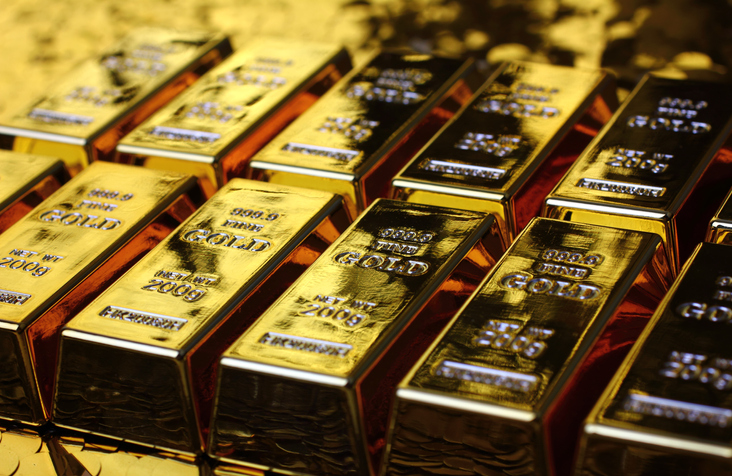Gold hits seven-year high, following rise in geopolitical tensions
Rising fear of war between US and Iran has pushed the price up. However, that's not the full story.
9th January 2020 13:22
by Tom Bailey from interactive investor
Rising fear of war between the US and Iran has pushed up the price of gold. That, however, is not the whole story behind the precious metal's performance.

On 3 January, the United States launched an airstrike that killed Iranian general Qasem Soleimani. Both a key military and political figure in Iran, said to be the second most powerful person in the country, Soleimani’s death has ratcheted up regional tensions, with Iran vowing retaliation.
As ever is the case, this increased sense of geopolitical risk has seen the price of gold head north. On 2 January, the day before the airstrike, gold’s spot price sat at $1529. By 6 January, it peaked at over $1,580, which represented its highest level since 8 April 2013.
Moreover, taken from the start of the year, gold has posted gains of over 3%.
This was partly driven by investors going into gold, seeing it as a safe haven asset in times of heightened geopolitical tensions or, in the worst-case scenario, actual war between the US and Iran. As Olivier Konzeoue, FX sales trader at Saxo Bank notes:
“markets seek refuge in a traditional safe haven in times of uncertainty”
The recent gains, however, are also part of a longer trend in gold’s recovery, which started in 2019.
Following the introduction of then-experimental monetary policy such as quantitative easing after the 2008 financial crisis, many economists feared inflation. This saw the price of gold rally, with the precious metal seen as a hedge against inflation.
However, theories of central bank-induced inflation failed to materialise. By 2013, such fears receded, taking with it the price of gold. Now, seven years later, the price of gold has recovered.
Much of this recovery came in 2019, with gold going from around $1,300 an ounce at the start of the year to $1,520 by the end of 2019. One of the best performing funds of the year was Charteris Gold and Precious Metals, which had a yearly return of 51.96%.
However, while 2019 saw no lack of geopolitical tension, there were other reasons behind the price rise of the precious metal, including an increase in central bank gold purchases and a consolidation among gold miners, leading to expectations of restricted supply.
A key driver, however, according to Ned Naylor-Leyland, manager of the Merian Gold & Silver, was a return of inflation expectations.
Naylor-Leyland argues that with continued loose monetary policy and the prospect of looser fiscal policy, inflation fears have returned. He says:
“The bond market perceives a greater risk of rising core inflation and of increased central bank balance sheet expansion.”
Should we see looser monetary and fiscal policy in the US, says Naylor-Leyland, inflation will increase, decreasing the real yield on US bonds – the real yield being the yield on a bond minus inflation. This, he says, should give renewed impetus to gold prices:
“The rising gold price is therefore more a reflection of the possibility of lower real yields than a rising ‘war risk’.”
Full performance can be found on the company or index summary page on the interactive investor website. Simply click on the company's or index name highlighted in the article.
This article was originally published in our sister magazine Money Observer, which ceased publication in August 2020.
These articles are provided for information purposes only. Occasionally, an opinion about whether to buy or sell a specific investment may be provided by third parties. The content is not intended to be a personal recommendation to buy or sell any financial instrument or product, or to adopt any investment strategy as it is not provided based on an assessment of your investing knowledge and experience, your financial situation or your investment objectives. The value of your investments, and the income derived from them, may go down as well as up. You may not get back all the money that you invest. The investments referred to in this article may not be suitable for all investors, and if in doubt, an investor should seek advice from a qualified investment adviser.
Full performance can be found on the company or index summary page on the interactive investor website. Simply click on the company's or index name highlighted in the article.
These articles are provided for information purposes only. Occasionally, an opinion about whether to buy or sell a specific investment may be provided by third parties. The content is not intended to be a personal recommendation to buy or sell any financial instrument or product, or to adopt any investment strategy as it is not provided based on an assessment of your investing knowledge and experience, your financial situation or your investment objectives. The value of your investments, and the income derived from them, may go down as well as up. You may not get back all the money that you invest. The investments referred to in this article may not be suitable for all investors, and if in doubt, an investor should seek advice from a qualified investment adviser.
Full performance can be found on the company or index summary page on the interactive investor website. Simply click on the company's or index name highlighted in the article.